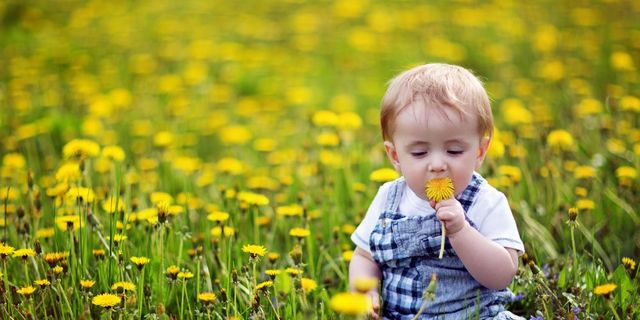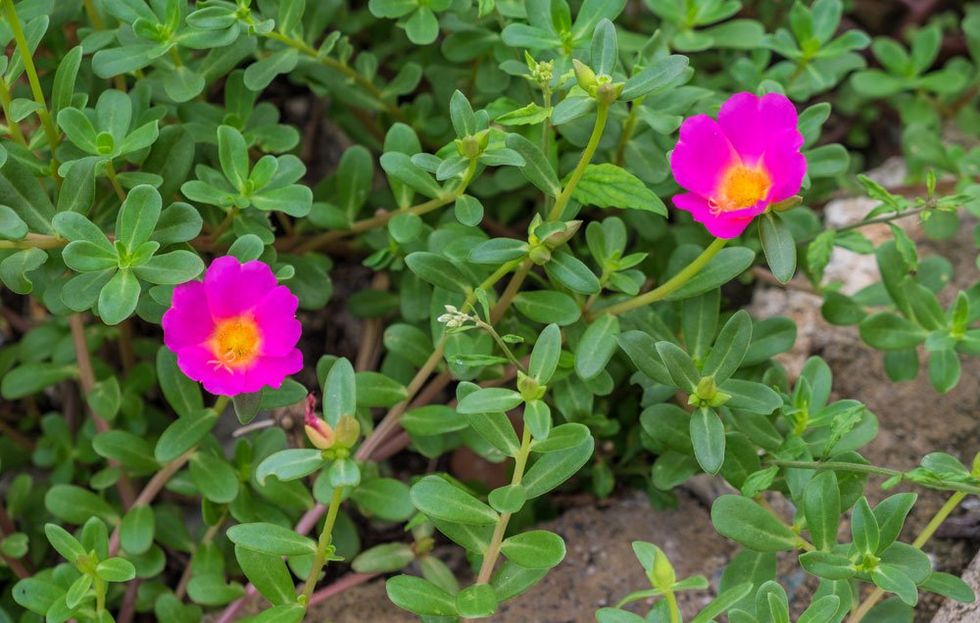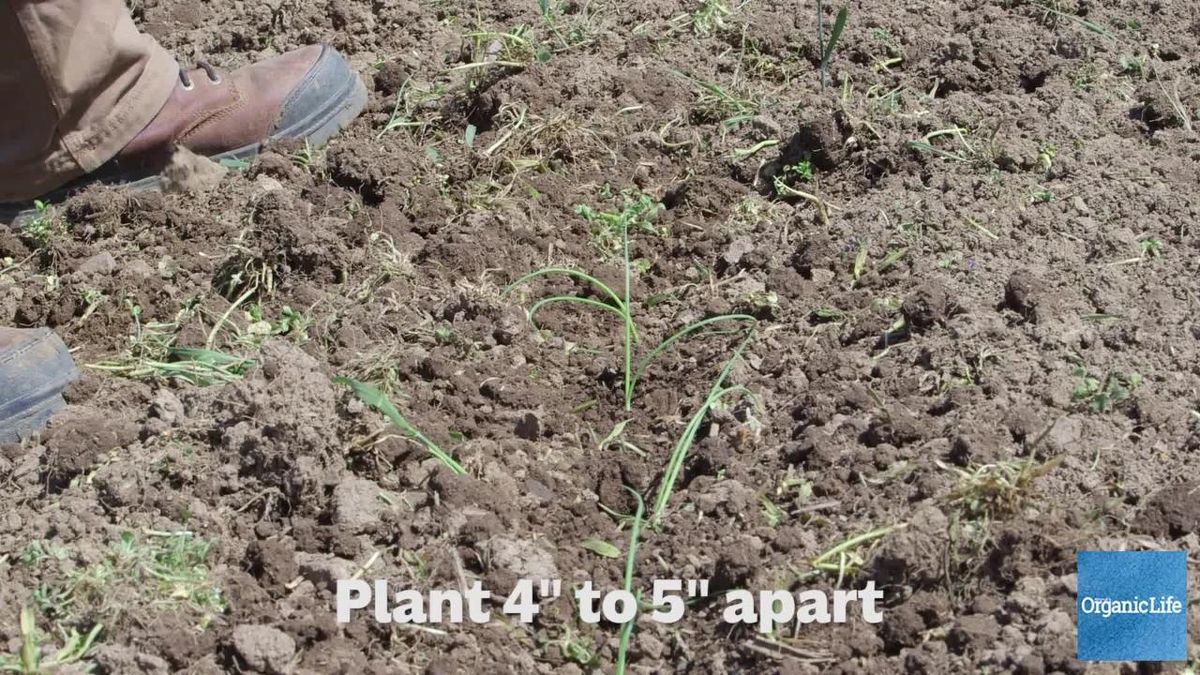If you think everything in your yard that isn't grass must be a nuisance, you're missing out—on a free lunch. Those pesky weeds invading your lush green patch of paradise are actually valuable foods, loaded with antioxidants, vitamins, and protein, sometimes even more nutritious than what you'll find at the grocery store. Things like dandelions and clovers are commonly found in American lawns, and if you pick them early, you'll get an incredibly sweet, nutritious addition to your next meal.
Related: 7 Common Backyard Weeds That Are Actually Medicinal Herbs In Disguise
Here are some suggestions for finding free munchies in your backyard. Just remember to ID them with a credible source if you’re not plant-savvy—there's even an app for that! If you've got a smartphone, download the Wild Edibles app created by Steve Brill, a botanist known for giving edible-plant tours of New York City's Central Park. Also, wash your harvest thoroughly before consuming, and steer clear of areas that may have been treated with chemicals or pesticides.
(On just a quarter-acre of land, you can produce fresh, organic food for a family of four—year-round. Rodale's The Backyard Homestead shows you how; get your copy today.)
Purslane
This plant has rounded, succulent, leaves and a reddish stem and grows everywhere, so it's very likely that you'll find a purslane plant somewhere in your neighborhood. Notoriously difficult to kill as a weed, purslane is probably better suited to your dinner plate anyway. It's loaded with antioxidant vitamins like vitamins A and C, and also contains healthy omega-3 fatty acids. You can eat the stems and leaves fresh—try them in salads or sandwiches—or use them in soups or in recipes that call for spinach (they’re related and have a similar taste). You can also try them pickled!
Dandelion
Perhaps the most familiar lawn weed of them all, the dandelion may also be the weed that’s most known to be edible. In fact, the reason it exists in the U.S. is that European settlers introduced it as a salad green. You can buy dandelion greens at some specialty food markets, but odds are, there are some growing for free a whole lot closer to you.
Related: Why You Should Stop Killing The Dandelions In Your Lawn
They have a slightly bitter taste when they mature, so harvest the tender leaves that appear in early spring and in late fall, when they're sweetest. The flowers are edible too and have a mildly bittersweet flavor. And eat them up! Dandelions have more beta-carotene than carrots.
Bamboo
This familiar plant has been made into everything from floorboards to pajamas. It's actually a type of grass. And though it's grown by U.S. farmers in warm climates and even as far north as New England, you're probably aware that as a weed, bamboo can be very invasive and hard to control. You can, however learn how to grow noninvasive bamboo at home.
Bamboo shoots are full of fiber, and are sometimes described as tasting like corn. Should any pop up in your vicinity, harvest shoots that are less than two weeks old and under 1 foot tall. Bamboo shoots have to be cooked before you eat them: Peel the outer leaves away and remove any tough flesh. Cut across the grain into one-eighth-inch slices, and boil in an uncovered pan for 20 minutes (or longer, if there’s still a bitter taste to them). After they’re prepared in this way, you can eat them with some soy sauce, add to salads, or use them in stir-fries.
Lamb's Quarters
Despite the name this isn't meat. Lamb's quarters is a weed commonly referred to as "wild spinach." It starts to appear, fortunately enough, in early summer after the last of the spring spinach has disappeared from farmers' markets. It's loaded with calcium and protein as well as vitamins A, C and K (even more so than traditional spinach). The best way to eat the leaves, says Hank Shaw, forager and author of Hunt, Gather, Cook, is to wash them well, sauté them in olive oil while they're still wet—the steam helps the leaves wilt—then add a dash of salt, garlic, pepper and a squeeze of lemon or lime.
Japanese Knotweed
Another invasive species you can control with your appetite, Japanese knotwood looks a little bit like bamboo. It's even called Japanese Bamboo, though they're not related. This weed might be harder to find if you don't live in the Northeast or Midwest, where invasive populations have taken root. But if you do see some, harvest the green and red shoots when the weeds are 6 to 8 inches tall, before they turn woody. Remove any tough leaves or rind and steam or simmer for a tart, rhubarb-like taste.
Watercress
You can pay $3 for a bunch of watercress—an antioxidant powerhouse—at your local grocery store…or you can find a stream and stock up for free. An increasingly popular ingredient in gourmet salads, many people don't realize that watercress is actually a weed. It grows alongside streams and riverbanks in nearly every U.S. state. The most popular way to eat watercress is to add it to salads—such as this quick beet + watercress salad—raw. Here are 9 more tasty ways to eat watercress.
Kudzu
Gardeners, homeowners, landscapers and foodies south of the Mason-Dixon line, take heed: Kudzu, the "weed that ate the South," can actually be eaten itself. This highly invasive weed, introduced from Japan in the late 1800s, now covers over 7 million acres of the Southern U.S. and is nearly impossible to kill.
Related: The Politics Of Invasive Species
Thus, you have an unending supply with which to experiment in the kitchen. Southerners have found dozens of ways to eat kudzu, including making jams and jellies, and pickling the flowers that appear in late summer. For your first efforts at cooking it, try steaming or boiling the roots until they're tender and adding soy sauce or miso, as is often done in Asian cooking. The plant is also used in Chinese medicine for treating allergies, colds, fevers and as a digestive aid. Brew a kudzu tea by chopping up a cup of leaves and boiling them for about 30 minutes to treat what ails you.
Red Clover
Another weed you'll see all over the U.S., red clover has been used for ages as a folk remedy for cancer. It contains the phytoestrogen genistein, which, although controversial, has been found to have a protective effect against colon and prostate cancers. However, because there's some evidence that phytoestrogens can have the opposite effect on breast cancer, go easy on it. But if you have some growing in your yard, an occasional meal of the flowers sprinkled over rice or cooked in soy sauce can be tasty and a good way to clean up your yard.
Related: 5 More Backyard Weeds You Should Be Eating
In addition to being potential cancer-fighters, clover flowers are high in protein. You can also eat white clover, but it's not as nutritious or flavorful as red.














